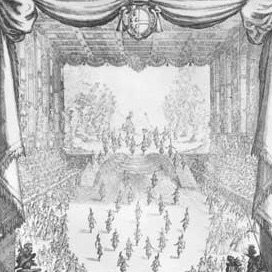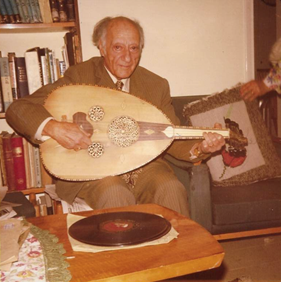Though much ink has been spilled reviewing the vast musical contribution of Jewish-Italian composer Salamone de Rossi, not much is known about his life. The little information that we do know has been gleaned from references to salary payments from the Mantuan Court, letters from two successive dukes releasing Salamone de Rossi from the obligation to wear a yellow badge, and references to his participation in the Hebrew theater. His approximate year of birth is assumed to be 1570. Some scholars have speculated that Salamone de Rossi was the son of renowned Jewish historian Azariah de’ Rossi, but this seems unlikely in light of Azariah’s claim in his Meor enayim (Mantua, 1573) that he had no surviving son.
Rossi entered the service of Duke Vincenzo I in 1587, first as a singer and as a violist and then as the leader of an ensemble comprised mostly of Jewish musicians. While his first two works are dedicated to Duke Vincenzo Gonzaga and his third to Marquis of Pallazuolo, a prominent member of the Mantuan court, it should not be assumed that Rossi enjoyed permanent office with the Gonzaga musical establishment. Rossi was employed and paid by the court on an individual basis for his performances at court events and for his vocal and instrumental compositions. Although it seems that Rossi was highly regarded by Vincenzo, demonstrated by his ducal decree to release Rossi from wearing a yellow badge, he had no hope of attaining permanent court employment, a privilege almost exclusively reserved for Christian musicians.
It is postulated that Rossi’s involvement with the theater served as one of his principle sources of professional connections. This theory is partially substantiated by a letter from Carlo Rossi to the duke on February 27, 1608 reporting Salamone's appointment as composer of the incidental music for Guarini’s comedy L’idropica, staged as part of the festivities in honor of Francesco Gonzaga’s marriage to Marguerite of Savoy.
Salamone de Rossi also took great interest in liturgical music composition. He called upon Leone da Modena’s rabbinic authority and sway to grant legitimacy to his proposed reforms of synagogue music. He wanted to introduce polyphony into the synagogue service, representing a significant break from traditional monophonic melodies for liturgy and the reading of scriptures. He utilized the style of polyphonic counterpoint prevalent in Italian art music as the base for these new settings. Rabbi da Modena issued a responsum in 1605 on the legitimacy of introducing polyphony into the synagogue service, without which Rossi likely would not have been able to continue his reforms of liturgical music.
Rossi’s work culminated in a collection of 33 polyphonic settings of Hebrew psalms, hymns and synagogue songs titled Ha-Shirim Asher li-Shelomo (1622-3), edited by Rabbi da Modena.
Additional Resources at the JMRC website:
Project - Salamone Rossi’s HaShirim Asher LiShlomo in its Fourth Centennial (5383-5783)






